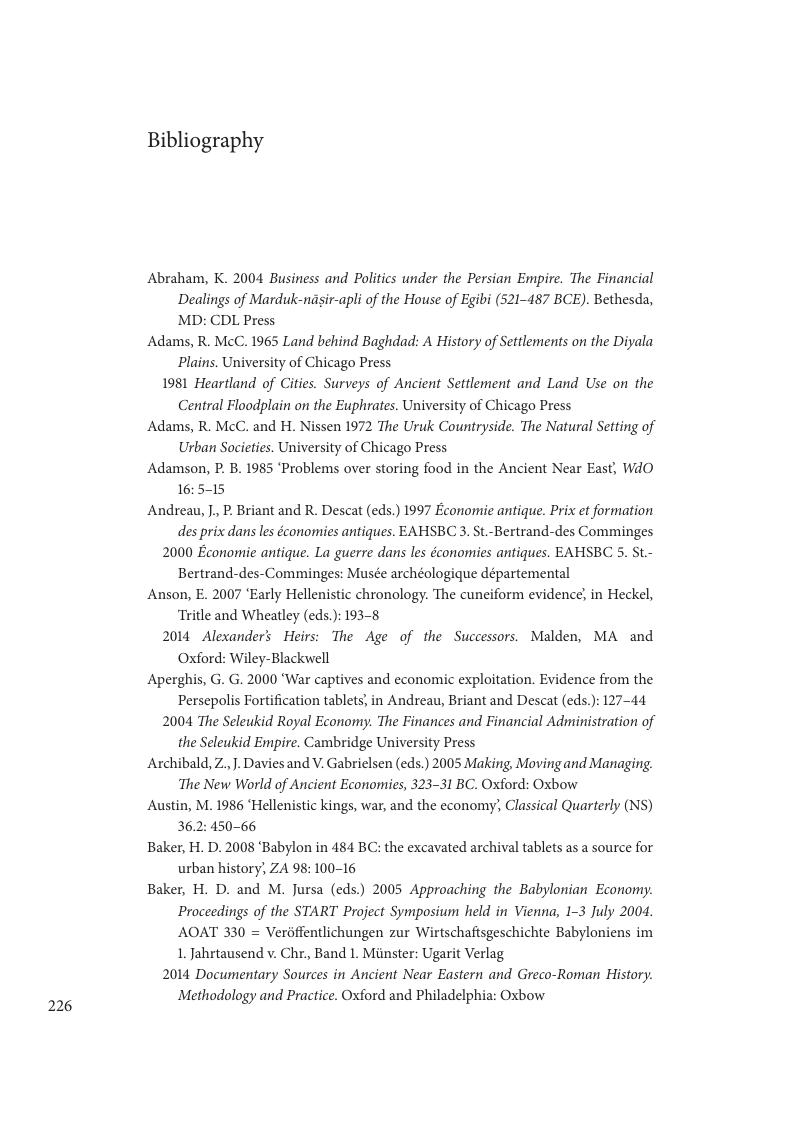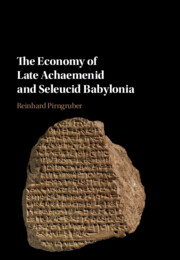Book contents
- The Economy of Late Achaemenid and Seleucid Babylonia
- The Economy of Late Achaemenid and Seleucid Babylonia
- Copyright page
- Dedication
- Contents
- Figures
- Tables
- Preface
- Abbreviations
- Part I Introduction
- Part II Structure
- Part III Performance
- Appendix: Regression Sheets for Barley, Dates and Wool
- Glossary
- Bibliography
- Index
- References
Bibliography
Published online by Cambridge University Press: 23 March 2017
- The Economy of Late Achaemenid and Seleucid Babylonia
- The Economy of Late Achaemenid and Seleucid Babylonia
- Copyright page
- Dedication
- Contents
- Figures
- Tables
- Preface
- Abbreviations
- Part I Introduction
- Part II Structure
- Part III Performance
- Appendix: Regression Sheets for Barley, Dates and Wool
- Glossary
- Bibliography
- Index
- References
Summary

- Type
- Chapter
- Information
- The Economy of Late Achaemenid and Seleucid Babylonia , pp. 226 - 244Publisher: Cambridge University PressPrint publication year: 2017



